
Targeted Resume Examples & Template to Personalize
A targeted resume works because it’s personalized to the job description and the company. In this article, you’ll learn how to tailor your resume to get jobs.

Christian Eilers
Career Expert
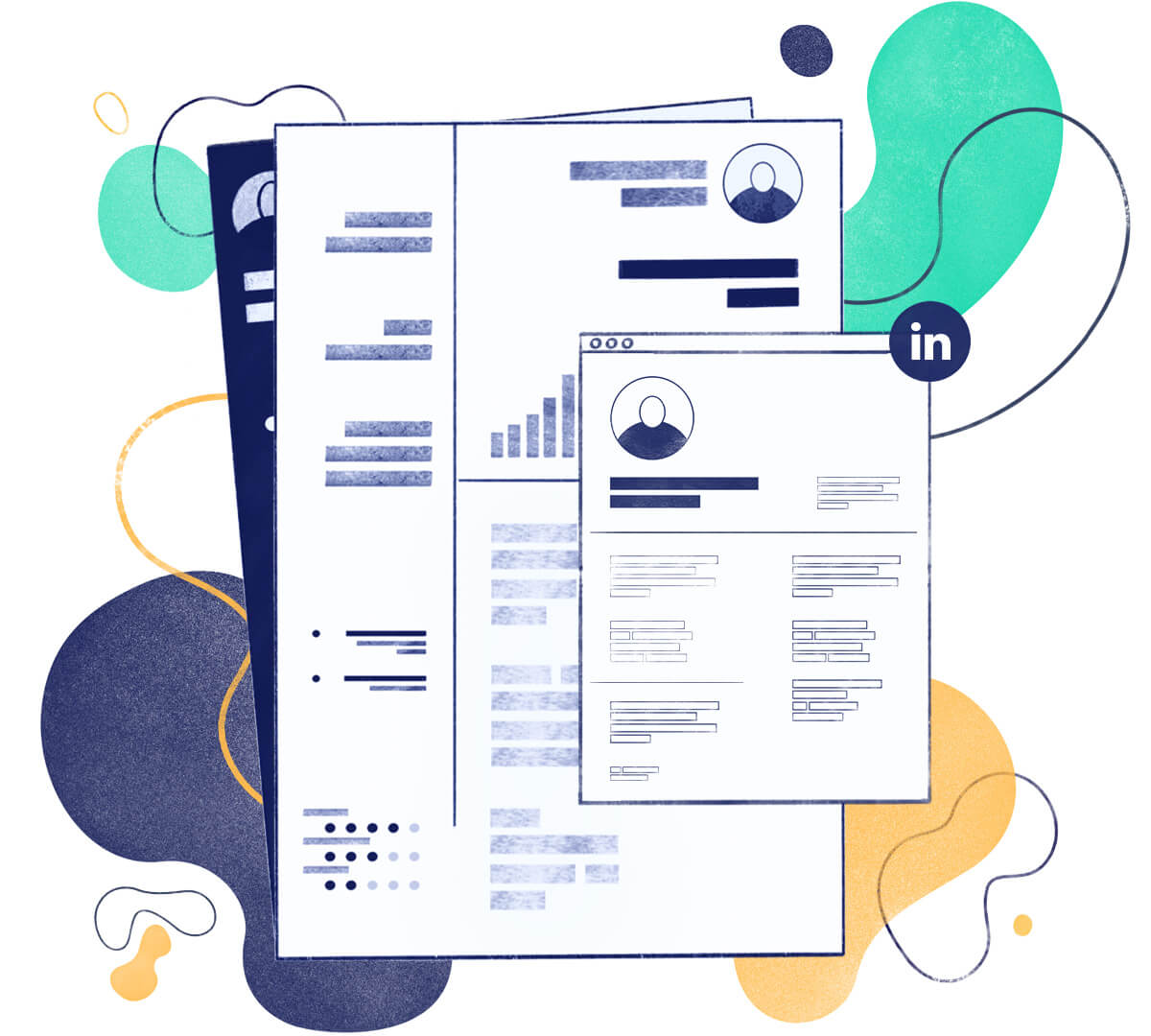
In 2024, if you’re not on LinkedIn, you don’t exist. If your profile isn’t strong enough, kiss the best jobs goodbye. Here, you’ll learn how to use LinkedIn properly.
You can’t imagine the world without social media, can you?
Twitter, Facebook, WhatsApp, Instagram, Pinterest… It’s hard to picture our millennial lives without these.
Now, whether you like it or not, social media will also play a crucial role in your professional life.
Yet through another platform—
Yes, you guessed it, LinkedIn.
Professionals use it to share industry insights, keep in touch with their networks, build a professional brand, or develop their expertise.
Recruiters, in turn, use LinkedIn to find new great people for their companies.
It doesn’t matter if you’re still studying or just graduated: you have to become friends with LinkedIn to give yourself the best chance for that big career break.
And you’ve come to the right place to learn all you need to know about how to make the most of this powerful tool.
I’ve reached out to top US LinkedIn gurus and asked for their best pieces of LinkedIn advice for students and recent grads.
They told me everything they know. And I’m about to share all that (plus some bonus hacks!) with you.
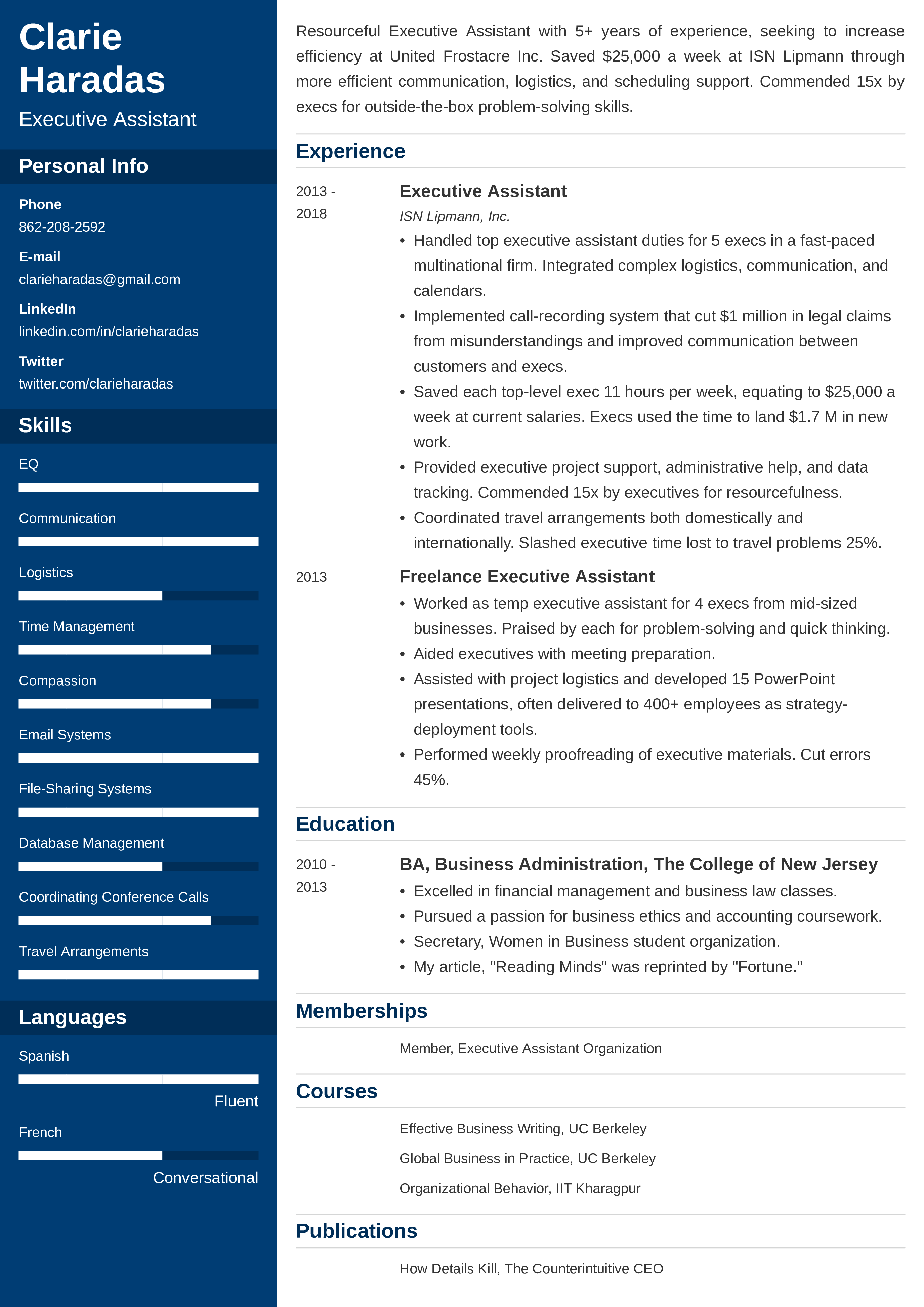
Create a job-winning resume with little effort. Hack your way through ATS software with our 18 beautiful templates—give our builder a try!
Create my resume now
Why is it a must?
Just consider this report: 87% of recruiters use LinkedIn in their hiring process. If not on LinkedIn, you’re missing out on 9 out of 10 jobs you could potentially land.
To make matters worse, according to CareerBuilder's data, 4 out of 10 recruiters won’t consider your application at all if they can’t find you on LinkedIn.
You get it, right? No LinkedIn profile is a deal-breaker for any career. But—
You can’t just have “a profile.” It needs to show you’re a savvy user.
Luckily, there are some easy strategies you can use to boost your profile’s quality in just a few hours.
When you first register on LinkedIn, your profile’s URL will be a random string of characters generated by the website. For a good first impression, you need to customize it so that it reads, more or less, like your full name.
For instance: linkedin.com/in/john-smith
To get a custom LinkedIn URL:
1. Go to your profile and click “Me” in the top right corner.
2. Click “edit public profile and URL.”
3. Type in whatever you want your URL to be (but keep it professional, so no jokes please.)
Here’s an expert insight on that:
Profile pictures should be pictures of you alone, in at least business casual wear. High-quality selfies are fine, but they should have good lighting. My best advice is to pair up with a friend and take photos for one another.
Once you get your profile pic sorted, make sure you don’t use the generic LinkedIn background picture.
As for your background photo, you can enjoy some more creative freedom. Preferably, pick a photo related to your industry.
You can also use a free template from a tool like Canva to create a background image similar to a business card: with your name and contact details.
You can find a gallery of 1,200+ free LinkedIn banner templates here.
What’s the best way to do it (especially if you feel you’re not a natural-born storyteller)?
We’ve asked a guy who makes a living off of storytelling, a communications consultant Zach Messler.
“Summaries in the professional world are associated with qualification summaries on resumes. Written in the third person and stuffy-sounding. On LinkedIn, that should never be the case.
Your summary section is by far the best place to get your vibe across. Tell your story! Why do you want to be in the [FILL IN YOUR CORE SKILL OR INTEREST HERE] field? What happened that made you want to do this? What are some unconventional things that you can show off as proof that you can do it?”
I mean, just check out Zach’s own profile. That’s the opening of his summary:
“There is a constant stream of cool ideas...Incredible innovations that do fantastical things. That should be the end of an amazing story. Sadly, it's not. Too often, success is limited by the wrong positioning…the wrong message at the wrong time…the wrong story.”
Who wouldn’t want to read on, right?!
Another example, one of my personal favorites, comes from David Blittersdorf, an owner of a renewable energy company.
He starts his summary with:
“I’ve been an energy guy my entire life. I built my first wind turbine at the age of 14 with bicycle parts and a light bulb, to generate electricity for my maple sugarhouse. When it worked, I was hooked.”
The lesson?
It doesn’t matter if you’re a CEO or a fresh grad. People love to see other people’s passion. If you base your LinkedIn summary on something that truly drives you, you’re guaranteed to get recruiters’ attention.
Zach suggests that you make the most of another piece of LinkedIn real estate, your headline.
“Rock the headline. Ask yourself what you want to be known for and make that your keyword. Looking for an accounting job? Get ‘Accounting’ in there. A marketing job? IT development? You get the drift.
Here's a quick formula for a killer headline: I help [FILL IN WHO YOU WANT TO HELP] achieve [FILL IN WHAT THEY WANT TO ACHIEVE] with [FILL IN YOUR CORE SKILL HERE].”
See what stands out in particular:
The headline formula Zach suggests is employer-centered.
That’s a great strategy in the modern job search. And it brings us to another key tip:
Another LinkedIn expert, William Ratliff of Employment BOOST, agrees with Zach in this area.
“Avoid desperate, uninspired language,” says William.
“A lot of entry-level candidates turn their LinkedIn profiles into objective statements and speak about ‘seeking gainful employment’ in their headlines. Yes, employers know that it’s what you’re seeking. Who isn’t?”
Get this:
Your online, digital footprint is on LinkedIn and pretty much nowhere else. That’s scary, to an extent, true, but that’s also a great opportunity.
You can use the space on your LinkedIn profile to communicate your professional brand.
Make the most of each section. Write a strong headline, a creative, personal summary that shows the person behind the professional, list all key industry skills you’ve learned in college and doing internships.
Ask professors, classmates, internship supervisors, or anyone else who knows you professionally to write a recommendation on your LinkedIn profile.
Aim for 3–5 of these.
Recommendations are so important because they validate your skills. Everyone can randomly file some qualifications they think they have. Not everyone can back them up with referrals.
And always keep one thing in mind:
“Show your would-be boss exactly how you’ll add value to their company. This should be your #1 priority,” suggests William.
Isaac Anderson, the owner of Zeeko, a LinkedIn optimization company for B2B sales, highlights the very same aspect.
“If you’re looking to get placed somewhere, you need to get into the head of the person who’s going to be doing the hiring.
Don’t think about what you achieved as a student. Think about what the employer is looking for. It’s the one thing I would love all students on LinkedIn to remember for ever.”
Alright.
So you’ve learned some tips on how to make your LinkedIn profile stronger and more likely to attract attention.
You’re good to go, right?
Wrong.
Anything but. See—
LinkedIn is a social platform. It’s a dynamic environment. So:
The ResumeLab builder is more than looks. Get specific content to boost your chances of getting the job. Add job descriptions, bullet points, and skills. Easy. Improve your resume in our resume builder now.
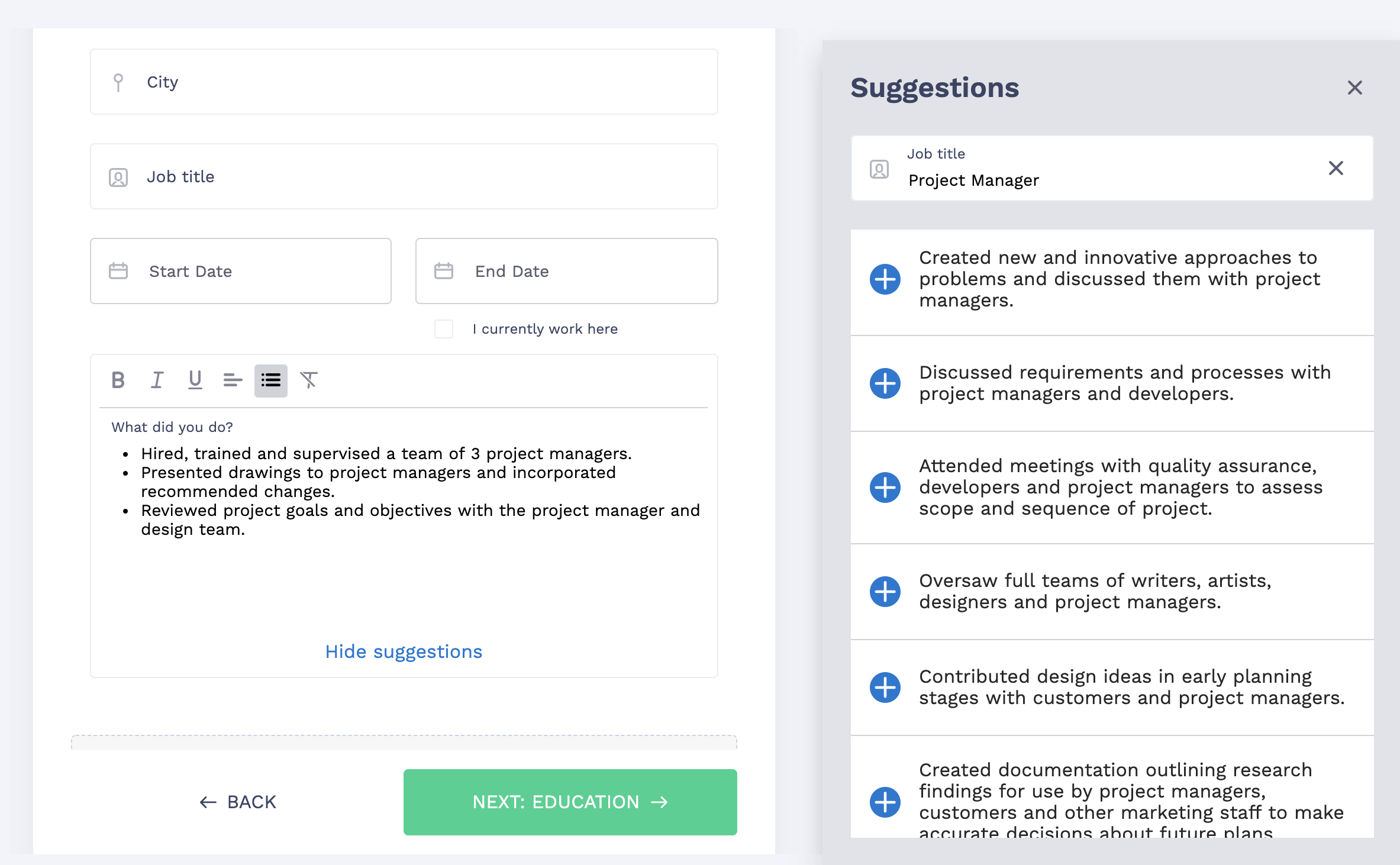
Nail it all with a splash of color, choose a clean font, and highlight your skills in just a few clicks. You're the perfect candidate, and we'll prove it. Use our resume builder now.
Networking sounds scary, I know. I used to dread the concept, too. Yet now, it’s what I’m basing my career on (and what allowed me to write this article for you!).
Let’s tame the networking beast.
It’s not about pestering people. For a college student or a fresh grad, networking on LinkedIn actually means three things.
Before we do...
Think about this stat:
Research has shown that LinkedIn’s InMail has a 300% higher response rate than traditional email.
Heck, salespeople in the B2B sector stopped writing “cold emails,” and switched to “cold InMails” because of how effective the latter is.
This data applies to you, too.
Rodney Yo, owner of the Best Online Traffic School, suggests you use the following strategy:
The best way to build out your network is to reach out to people working in your dream roles or companies, getting to know them and learning about their career journey. You can’t imagine how much invaluable insights you’ll get from their expertise.
Rodney agreed to share his battle-tested template for a LinkedIn InMail invite.
Hi [DESIRED’S CONNECTION NAME],
My name is [YOUR NAME]. I noticed your LinkedIn profile as I was looking to expand my network within the world of [YOUR INDUSTRY].
Your background is highly impressive and it's amazing what you've been able to accomplish so far in your career. I recently read about [THEIR ACHIEVEMENTS].
Would you be open to chatting with me for 15 mins or so?
I'd greatly appreciate it if I could hear about how you were able to get to where you're at in your career today. I'd also love to pick your brain on any pointers that you'd recommend for someone like me.
Any time you're able to dedicate would be much appreciated. To thank you, I'd love to send you over a Starbucks gift card.
Do you have some time on:
* [DATE AND TIME 1]
* [DATE AND TIME 2]
If any of those times do not fit your schedule, please let me know your availability and I’ll do my best to accommodate.
Best,
[YOUR NAME]
Notice one thing:
You’re not asking the person to hire you. You’re not even asking for recommendations.
But if you manage to get them to share insights about the industry and some suggestions on how to manage your career, you’ll get something so much more valuable.
Knowledge you can use in your job search, work, and everyday life.
As I mentioned before, another networking technique you can use to get ahead in your career, especially at its very beginning, is engaging in online groups and communities.
And LinkedIn is a perfect place to find them.
But, hey? Why would you choose to trust me?
Here’s a real-life story to illustrate what I mean.
It comes from Niki Hale—today a Marketing Manager in one of the leading financial services firms; 6 years ago, a fresh grad with no full-time experience in her industry.
First piece of advice for students and fresh grads: find a community. Wherever you can. I joined a local branch of a national marketing and advertising group for young people. I can directly attribute my career path to the connections I made in that network. Yes, sometimes it really is about who you know.
Once you join a group that interests you, read a lot and interact with its members.
Share your thoughts and ideas. Engage with what other members publish.
And—don’t forget to post good-quality content yourself. No, you don’t need a blog of your own. You can do as little as forward valuable industry-related articles you come across online.
If it’s something that resonated with you, so will it with others.
If you post interesting content on a regular basis, you’ll quickly become a go-to resource for others in your industry. That’s pretty much all it takes to build that mythical “thought leadership.”
One really cool hack Niki shared:
Don’t limit yourself to LinkedIn.
“Pay attention to Slack—it’s gained serious traction in the last few years. For example, there is a Denver Digital Marketers group that I have joined that features 20+ channels focused on various topics and allows thousands of local individuals to ask questions, share trends, and network in real-time chat.
It doesn’t matter what industry you’re in, you need a place to continue learning (it doesn’t end when school does). Research Slack channels focused around your industry. You’ll be stunned at how much knowledge (and great connections!) you’ll gain.”
Want to learn more about networking in college? Check out this gem written by my friend Maciej: How to Network in College: Game-Changing Strategies & Tips
I know what you might be thinking.
Networking takes time. I need a job now.
Well, if you followed the tips for optimizing your profile, you’ll likely attract jobs without even applying.
Even if you do have to send a resume, a strong profile on LinkedIn will guarantee more interview invites.
But still…
According to LinkedIn strategist Teddy Burris, not really.
Everyone else is ‘looking’ for jobs on LinkedIn. But you want to know the truth? Stats reveal that 75% of all jobs are not even listed online. They’re hidden in the proverbial ‘Job Haystack.’ Instead of looking for jobs, look for people who can introduce you to people who, in turn, may need your skills, experience, education, and knowledge. For the best jobs, it all starts with a conversation, not an application.
If you really are in a hurry, at least refine your job search.
A good place to start is to see LinkedIn’s dedicated student careers page. You can browse entry-level jobs by location, industry, and function.
As a bonus, you’ll get some great free resources curated by the LinkedIn team.
Finally, you can try and land an internship at LinkedIn via LinkedIn.
See their internships and entry-level postings for students here.
(They’re insanely competitive but, let’s face it, who wouldn’t want to hire an ex-LinkedIner, right?)
Double your impact with a matching resume and cover letter combo. Use our cover letter generator and make your application documents pop out.
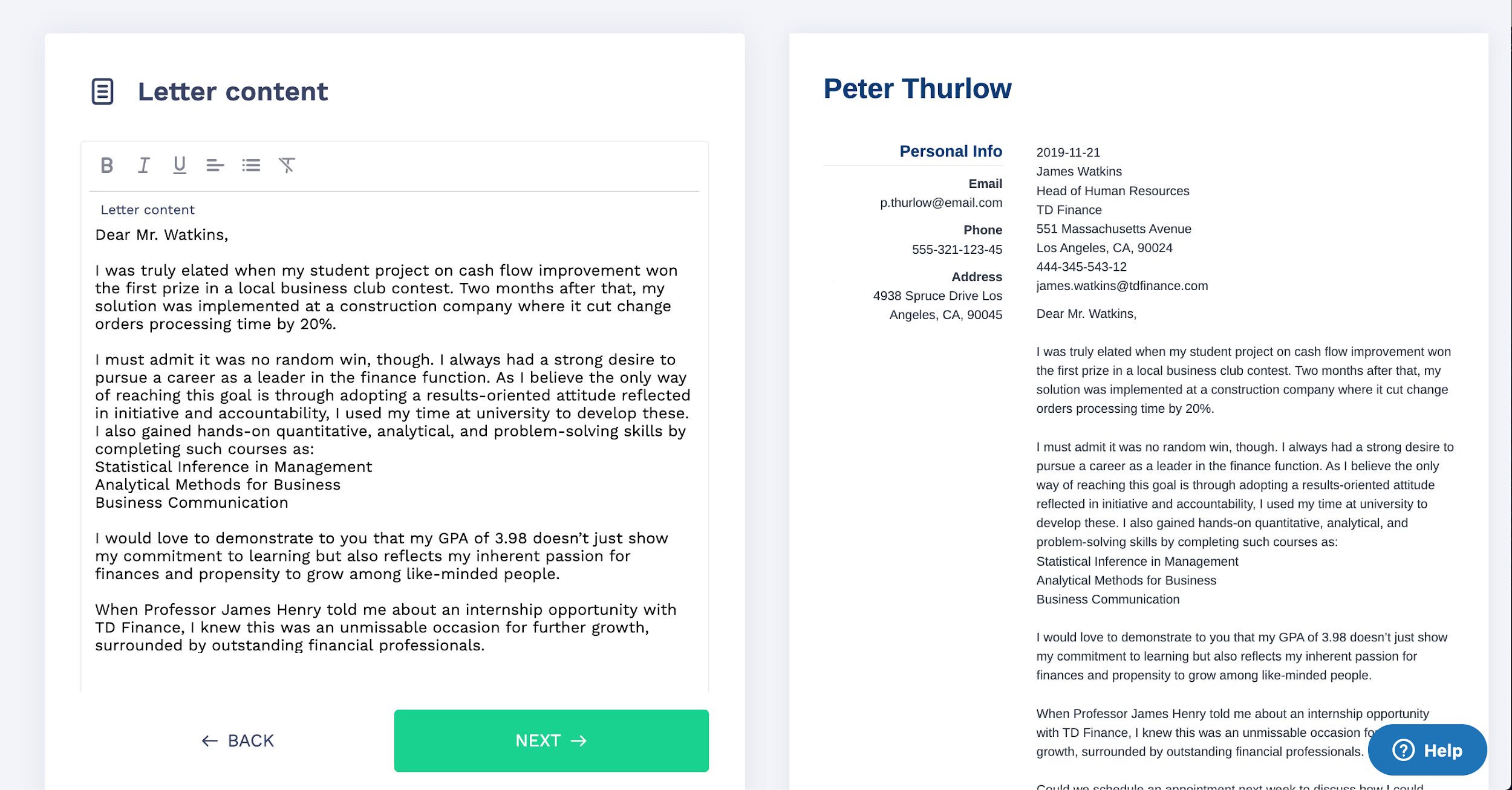
Want to try a different look? There's 21 more. A single click will give your document a total makeover. Pick a cover letter template here.
To make the most of your LinkedIn profile, do this:
Need more career advice? Check out these free resources:
Fingers crossed for the stellar career ahead of you! You’ve got this. And should you have any questions or concerns, drop me a line in the comments, I’ll do my best to help you with anything you need.

A targeted resume works because it’s personalized to the job description and the company. In this article, you’ll learn how to tailor your resume to get jobs.

Christian Eilers
Career Expert
![How To Thrive In Your Career If You Have a Disability [Tips]](https://cdn-images.resumelab.com/pages/jobs_for_workers_with_disabilities_listing.jpg)
20 percent of U.S. adults have a disability. But it doesn’t mean you can’t have a great career. Here’s an ultimate guide in helping you overcome all career obstacles.

Maciej Duszynski, CPRW
Certified Professional Resume Writer, Career Expert
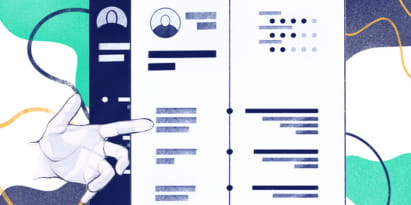
Resume AI writing is a hot topic as of late. And the growing potential of ChatGPT is stirring up the creative industry. Let's explore the pros & cons of AI tools for resume-making.

Mariusz Wawrzyniak
Career Expert